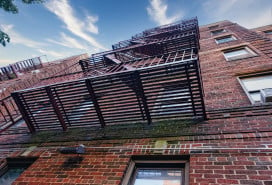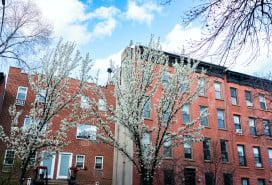How to fix your dated orange wood cabinets and floors—even if you rent
- Dial the sunset shade back with wood stains, toners, or dyes—or paint to hide it completely
- Even easier but less effective: Use blue lighting and a neutral palette—no sanding required
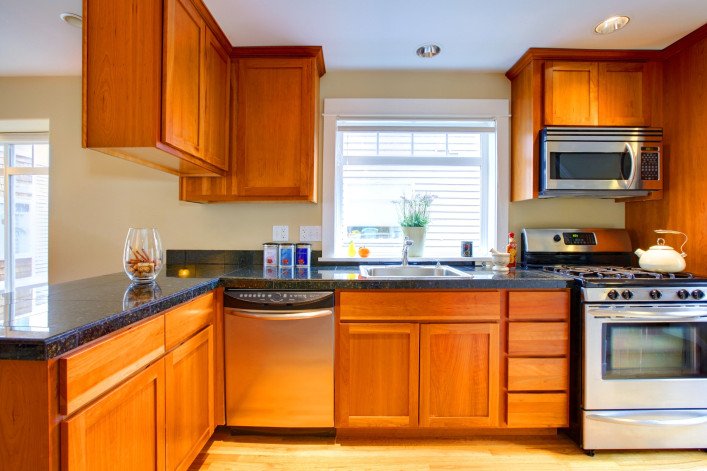
You don't have to rip out those dated orange cabinets or floors to have a stylish home. Handy products and a bit of elbow grease can do the trick.
iStock
If your apartment or house has orange-toned woodwork, which was all the rage in the 1980s, you already know how glaring it can be—and how costly it would be to replace those dated floors, doors, kitchen cabinets, or bathroom counters.
The good news is you're not stuck with these eyesores. It turns out there are easy and affordable ways to fix them, even if you rent (with your landlord’s permission, of course).
"We do come across this situation often in renovations," says Tina Ramchandani, principal interior designer at Tina Ramchandani Creative, a NYC design firm specializing in "soulful minimalism."
Tali Berzak, a broker at Compass, says she frequently runs into orange wood in her listings. "There are several efficient ways to approach a refresh, such as painting or stripping the wood, which works wonders!" she says.
According to Yaiza Armbruster, principal of New York-based Atelier Armbruster, a full-service design and architecture firm, the culprit is usually red oak and/or the polyurethane layer on floors, which tends to get yellowish or orangish over time. Research shows that up until about 1990, these protective coatings had a strong yellow undertone, so per color theory, red (from woods like red oak and cherry) plus yellow (from the coating) equals orange.
And despite the current comeback of certain kinds of wood—namely white oak, birch, maple, and walnut—as part of the movement toward natural materials, orange wood is hard to fall back in love with.
Read on for ways to dial back the orange that won't break the bank—or your back.
Mask the orange with a new stain
Interior wood stains come in lots of different shades and can be applied on top of already stained wood, so the key is to find one that conceals or balances that orange tinge. Any protective coating must be thoroughly sanded down (an orbital sander makes fast work of this step), but uncoated woods may just need a light scuffing for the stain to adhere. Look for water-based stains, which are low in VOCs and much better for you and the environment.
"Because everyone wants to go light now, we try to test a few different areas of a home to see how the woods will take the new stain," Ramchandani says. "We’ve noticed that adding a bit of gray or white [to the stain] can help, but there is a chance the floors could still have a pinkish tone, making it a bit more challenging."
Armbruster agrees: "I would say you will never get the nice, white-oak flooring vibe, but you can sand the floors and apply a more neutral finish like Bona Natural or add a tint with products like Rubio Monocoat," she says.
Tita Omeze, an agent at The Corcoran Group, who says she always winces whenever she encounters orange wood, also mentions Bona products as a way to tone down the orange in floors after sanding. You may want to start with Bona Red Out, specifically designed to be used on flooring made with red oak or other wood species with red tones.
What if only the white-oak look will do? Berzak says the answer is to sand and strip the floors and then white-wash them for a brighter, refreshed look (as shown below). The secret sauce is a white-tinted sealer, such as Pall-X Whiteseal or Bona NordicSeal, following the directions on the label (or hiring a pro to do the work). Then skip the polyurethane—shiny is out, matte is in, and you'll end up with a yellow/orange tinge again.
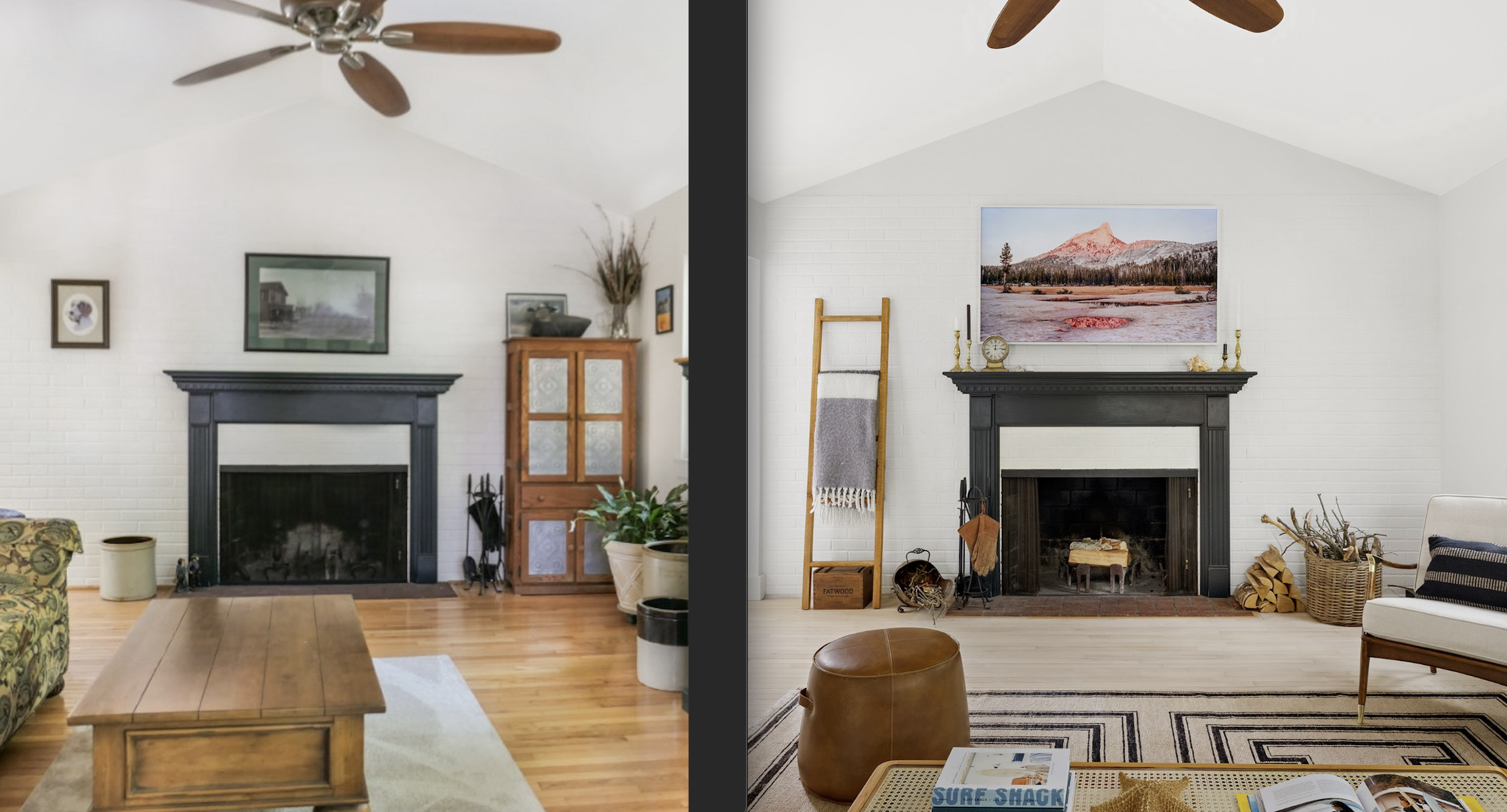
Otherwise, Ramchandani says the safest bet is to go dark, such as with a true medium brown, walnut, or ebony stain, though she admits that ebony floors are a hard pill for some clients to swallow. Walnut, however, is having a serious (and extended) moment and is ranked by several sources as the best-selling color by Minwax.
Of course, if you really, really want that white oak look, your only option might be to replace the floors. "Those older planks most often are also narrow, which is not necessarily in vogue right now," Armbruster says.
Balance out the orange
Rather than going with a new stain, you can use special wood toners and stain dyes in cool colors to pull out the warm oranges/yellows/reds in wood. These products do not require stripping the wood.
If the wood is coated, you'll need to spray a transparent aerosol toner, like one from Mohawk with a blue or green tint onto the wood. If the wood isn't coated, you can use a stain dye with a similar blue or green tint, for example from General Finishes. In both scenarios, know that blue will provide a more drastic change than green.
In addition, keep in mind that using toners and dyes will result in a darker brown shade.
Paint the wood
If none of the above works out, or if you are looking for a foolproof solution, you can always paint the undesirable wood. Boutique brands like Annie Sloan, Amy Howard, and All-in-One Paint are popular with DIY types, while any interior paint by major paint companies will also work (go with floor/deck paint when painting floors).
For example, Omeze says she once painted the orange floor of a for-sale property white (shown below).
"It was an old house, and I knew it would have to be renovated, but I thought this would freshen up the space for sale regardless. So, I painted the floor in one room of the house white, laid a Moroccan rug on top of the painted white floor, and staged the room. It looked great," she says.
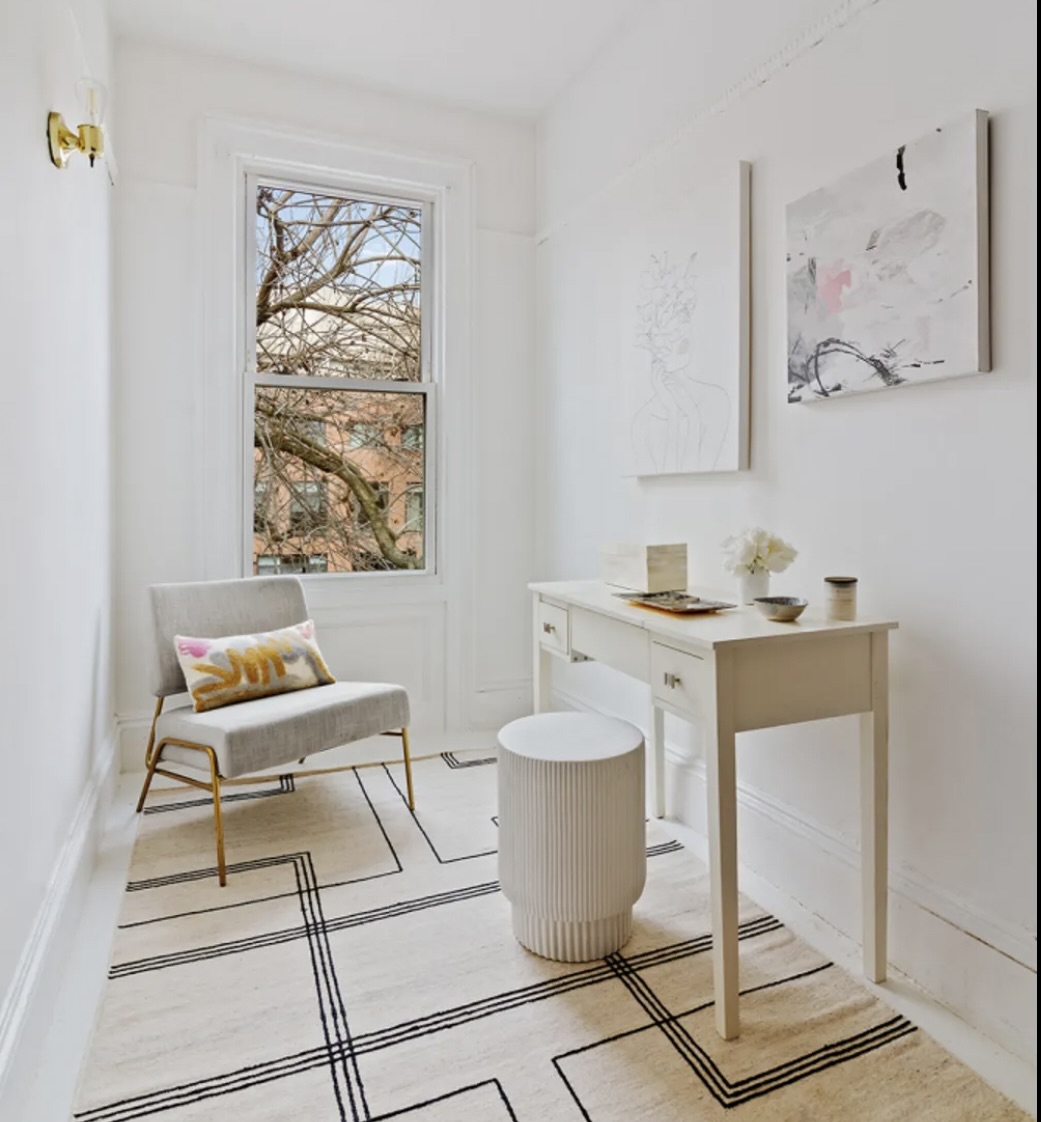
As she points out, when handling anything that bothers you in your home, it all comes down to your budget.
"In the case of woodwork that doesn’t suit your taste, either you can go ‘all the way’ and rip it out or, for a more wallet-friendly option, paint it," she says, adding that it's especially easy to paint cabinets and other millwork. "I would paint them white or a cool color like Revere Pewter by Benjamin Moore."
Berzak is another proponent of painting over tired millwork, pointing to two of her own houses involving darker mahogany and red oak cabinets.
"We decided to paint them white because the quality of the wood was far superior to what a carpenter would use today. So we hired a contractor to sand and paint the cabinets with white lacquer paint," she says. (See below for one of those projects.)
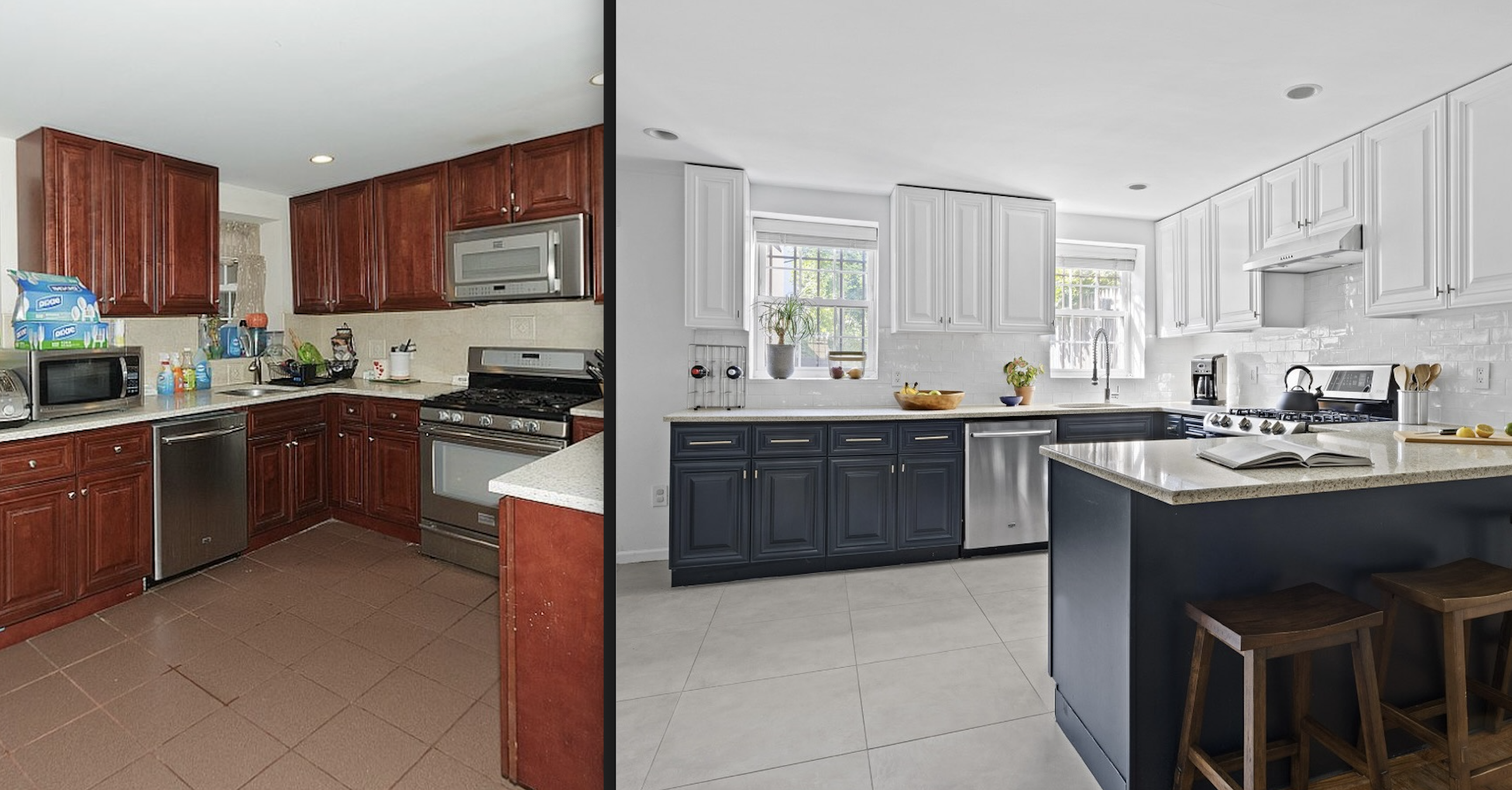
In the other instance, Berzak painted her kitchen cabinets white and stripped and white-washed the oak floors, for a two-in-one approach.
"I think it makes a massive difference in the value and doesn’t have to cost a lot to achieve a significantly more modern look," she says.

What if you rent?
Check with your landlord—many of them will be open to tenants who are willing to pay for certain improvements, so it never hurts to ask.
If the answer is no, or if you are generally hesitant about altering the original wood, there are some tricks of the trade to explore.
Lighting with a blue undertone can make a surprisingly big impact by providing subtle shading where it's needed. Avoid warm (yellow) bulbs, which will only emphasize the orange.
On the flip side, blue (orange's complementary hue on a color wheel) paint, rugs, furniture, and other design details will make the orange wood stand out even more. Stick with a neutral palette that leans into warm, creamy whites.
Or just embrace the '80s feeling by incorporating similar shades—rust sofas are still trending—and making the whole thing look intentional.
"Good design always helps to mask imperfections and you can lean into the color with art, pillows, funky chairs, etc. Make it a vibe," Omeze says.
You Might Also Like












